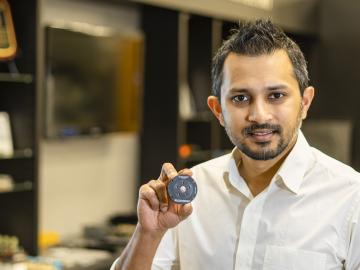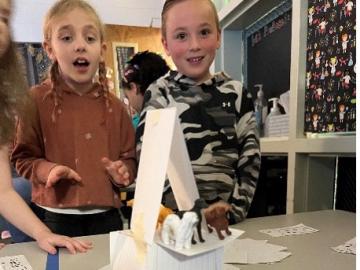
Filter News
Area of Research
- (-) Clean Energy (168)
- (-) Neutron Science (72)
- Advanced Manufacturing (5)
- Biological Systems (1)
- Biology and Environment (102)
- Biology and Soft Matter (4)
- Building Technologies (2)
- Chemical and Engineering Materials (3)
- Chemistry and Physics at Interfaces (7)
- Climate and Environmental Systems (7)
- Computational Biology (1)
- Computational Chemistry (5)
- Computational Engineering (1)
- Computer Science (3)
- Data (1)
- Earth Sciences (1)
- Electricity and Smart Grid (1)
- Energy Frontier Research Centers (7)
- Fuel Cycle Science and Technology (2)
- Functional Materials for Energy (8)
- Fusion and Fission (32)
- Fusion Energy (7)
- Geographic Information Science and Technology (1)
- Isotopes (21)
- Materials (122)
- Materials for Computing (13)
- Materials Synthesis from Atoms to Systems (8)
- Materials Under Extremes (7)
- National Security (45)
- Neutron Data Analysis and Visualization (2)
- Nuclear Science and Technology (27)
- Quantum Condensed Matter (3)
- Quantum information Science (4)
- Renewable Energy (2)
- Sensors and Controls (2)
- Supercomputing (153)
- Transportation Systems (4)
News Type
News Topics
- 3-D Printing/Advanced Manufacturing (24)
- Advanced Reactors (2)
- Artificial Intelligence (6)
- Big Data (1)
- Bioenergy (12)
- Biology (5)
- Biomedical (7)
- Biotechnology (1)
- Buildings (11)
- Chemical Sciences (4)
- Clean Water (5)
- Climate Change (8)
- Composites (2)
- Computer Science (13)
- Coronavirus (8)
- Cybersecurity (5)
- Decarbonization (16)
- Energy Storage (21)
- Environment (21)
- Fossil Energy (2)
- Grid (13)
- High-Performance Computing (3)
- Machine Learning (3)
- Materials (9)
- Materials Science (11)
- Mathematics (2)
- Mercury (1)
- Microelectronics (1)
- Microscopy (3)
- Nanotechnology (4)
- National Security (2)
- Net Zero (1)
- Neutron Science (34)
- Nuclear Energy (3)
- Partnerships (4)
- Physics (1)
- Polymers (2)
- Quantum Computing (1)
- Quantum Science (2)
- Security (4)
- Simulation (1)
- Space Exploration (2)
- Summit (4)
- Sustainable Energy (14)
- Transportation (17)
Media Contacts

Having passed the midpoint of his career, physicist Mali Balasubramanian was part of a tight-knit team at a premier research facility for X-ray spectroscopy. But then another position opened, at ORNL— one that would take him in a new direction.

Inspired by one of the mysteries of human perception, an ORNL researcher invented a new way to hide sensitive electric grid information from cyberattack: within a constantly changing color palette.

As a researcher in power electronics, Shajjad Chowdhury is focused on exceeding capacity. In a lab space at the National Transportation Research Center at ORNL, he’s developing a novel capacitor and inverter component that will shrink the size and reduce the cost of electric drive units. He sees this as a potential step to increase electric vehicle adoption in the United States.

On the grounds of the University of Maine’s Advanced Structures and Composites Center sits the nation’s first additively manufactured home made entirely from biobased materials - BioHome3D.

Few things carry the same aura of mystery as dark matter. The name itself radiates secrecy, suggesting something hidden in the shadows of the Universe.

Researchers at ORNL are helping modernize power management and enhance reliability in an increasingly complex electric grid.

How did we get from stardust to where we are today? That’s the question NASA scientist Andrew Needham has pondered his entire career.

A chemist from Oak Ridge National Laboratory attracted national attention when her advocacy for science education made People magazine’s annual “Women Changing the World” issue.

Nine engineers from ORNL visited 10 elementary and middle school classrooms in three school districts during National Engineers Week, Feb. 21 to 24, 2023, describing and demonstrating the excitement of the engineering profession to more than 300 Tennessee students.

Scientists have long sought to better understand the “local structure” of materials, meaning the arrangement and activities of the neighboring particles around each atom. In crystals, which are used in electronics and many other applications, most of the atoms form highly ordered lattice patterns that repeat. But not all atoms conform to the pattern.


